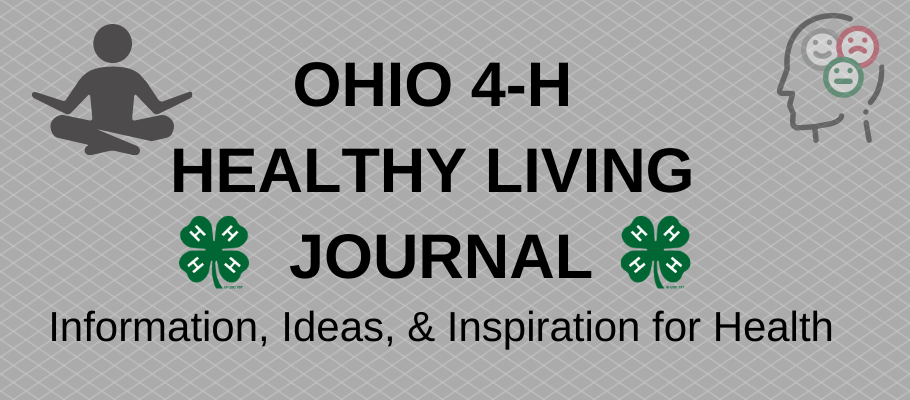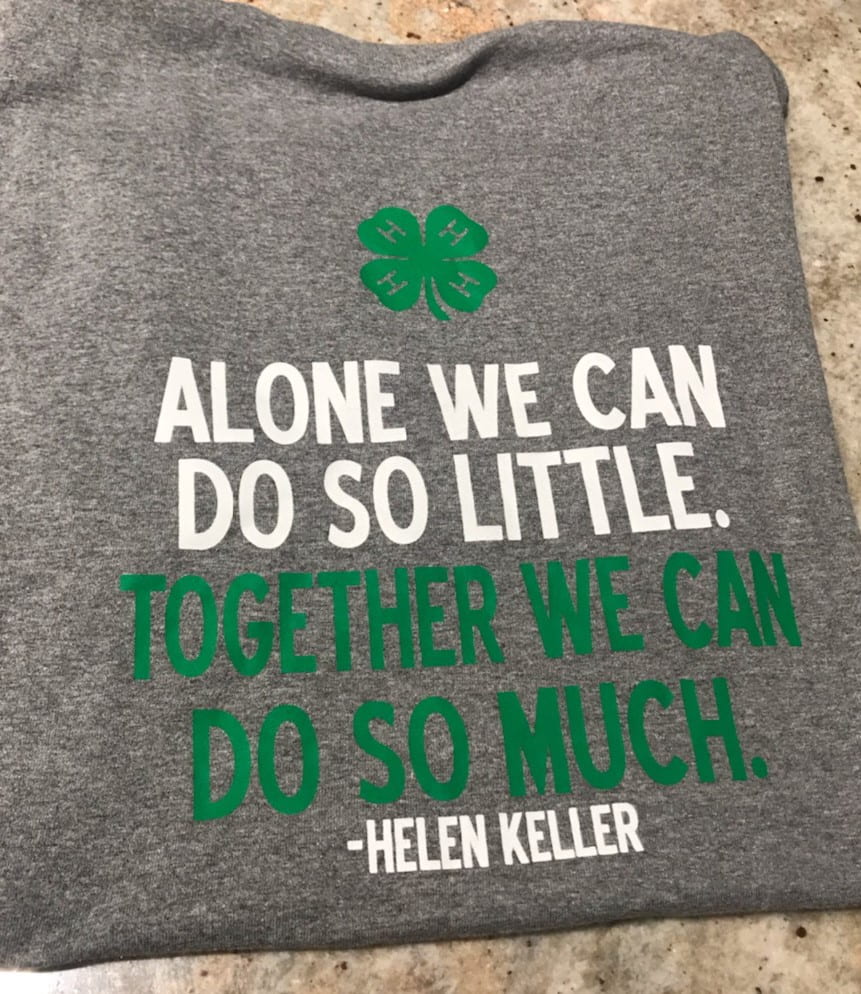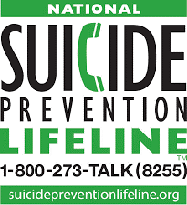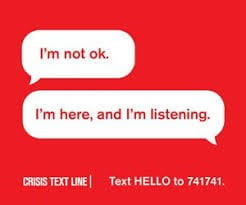by Theresa Ferrari, Extension Specialist, 4-H Youth Development
Today I got my first dose of the COVID-19 vaccine. I’m now part of the 55 million people in the U.S. who so far have received their first dose of the vaccine.
I’ve been waiting for this day for a while now, and I’m glad it finally arrived! It was painless and after waiting the required 15 minutes with no reaction, I was free to go. The whole process was very organized and efficient. Ten hours later, and I notice a very slight soreness when I lift my arm, similar to how I react to a flu vaccine. Ironically, my second appointment is 1 day shy of the first day I started working from home. It’s either been a long time or a short time ago, depending on how you look at it.
Just like when I have voted, I got a sticker that declares I’ve been vaccinated. In a way, getting the vaccine is like a vote – a vote of confidence in science. A vote that shows I’m doing my part, not only for myself, but for a future without this virus.
How does the COVID-19 vaccine work? It’s important to know the facts behind the vaccine.
The two COVID-19 vaccines currently approved for use as of this writing use mRNA, which stands for messenger RNA (ribonucleic acid). Who knew that high school biology class would come in so handy? mRNA is a new approach to vaccines. mRNA vaccines take advantage of the process that cells use to make proteins in order to trigger an immune response and build immunity to SARS-CoV-2, the virus that causes COVID-19.
mRNA can most easily be described as instructions for the cell on how to make a piece of the “spike protein” that is unique to SARS-CoV-2. Because only part of the protein is made, it does not do any harm to the person vaccinated but it is helps to induce an immune response.
After the piece of the spike protein is made, the cell breaks down the mRNA strands and disposes of them using enzymes in the cell. It is important to note that the mRNA strand never enters the cell’s nucleus (the part of the cell that controls its activities and where your DNA is) or affects genetic material (DNA). mRNA vaccines DO NOT alter or modify someone’s genetic makeup.
Once displayed on the cell surface, the protein or antigen causes the immune system to begin producing antibodies and activating cells (called T-cells) to fight off what it thinks is an infection. These antibodies are specific to the SARS-CoV-2 virus, which means the immune system is primed to protect against future infection.
Here are some key points about the COVID-19 vaccine.
- Like all vaccines, COVID-19 mRNA vaccines have been rigorously tested for safety before being authorized for use in the United States.
- mRNA technology is new, but not unknown. They have been studied for more than a decade.
- mRNA vaccines do not contain a live virus and do not carry a risk of causing disease in the vaccinated person.
- mRNA from the vaccine never enters the nucleus of the cell and does not affect or interact with a person’s DNA.
Be Part of the Herd
Why do we need vaccines? You many have heard about the concept of herd immunity. This site shows what happens when a contagious disease enters an unvaccinated group. Many members are infected because they lack immunity to the disease. The Mayo Clinic explains that herd immunity occurs when a large portion of a community (the herd) becomes immune to a disease, making the spread of disease from person to person unlikely. As a result, the whole community becomes protected — not just those who are immune.
When a large proportion of the population is vaccinated the spread of disease is limited. Vaccines create immunity without causing illness or resulting complications. Herd immunity makes it possible to protect the population from a disease, including those who can’t be vaccinated, such as newborns or those who have compromised immune systems. Using the concept of herd immunity, vaccines have successfully controlled deadly contagious diseases such as smallpox, polio, diphtheria, rubella, and many others. It is estimated that for COVID-19, about 75% of the population must be vaccinated to achieve herd immunity.
Herd immunity can also be reached when a sufficient number of people in the population have recovered from a disease and have developed antibodies against future infection. A large number of people would have to become infected to reach the herd immunity threshold in this way. This amount of infection could also lead to serious complications and millions of deaths, and is therefore not the desirable way to reach herd immunity.
What next?
Both COVID-19 and the vaccine are new, so there are some things we don’t know yet. We don’t know how long protection lasts for those who get infected or those who are vaccinated. We also don’t yet know whether getting a COVID-19 vaccine will prevent you from spreading the virus that causes COVID-19 to other people, even if you don’t get sick yourself. [Update 3/29/21: According to a study reported by the CDC, the current mRNA COVID-19 vaccines are effective for preventing SARS-CoV-2 infection in real-world conditions. Those who were fully vaccinated were 90% less likely to get infected.] What we do know is that COVID-19 has caused very serious illness and death for a lot of people.
Even after receiving a vaccination, it’s important for everyone to continue using all the tools available to help stop this pandemic as we learn more about how COVID-19 vaccines work in real-world conditions.
To protect yourself and others, follow these recommendations from the CDC:
- Wear a mask over your nose and mouth
- Stay at least 6 feet away from others
- Avoid crowds
- Avoid poorly ventilated spaces
- Wash your hands often
Two personal stories related to pandemics and vaccines:
- A pandemic connection: My maternal grandmother had the flu during the 1918 epidemic. As I remember her stories, she was sick in bed for 3 weeks and then she recovered. Not long after that she emigrated from Italy to the U.S. I wish I had asked her more questions about her experience (I guess I didn’t know that years later I’d be living through the next global pandemic). So write down your stories and they will be there for you to share and for future generations to learn from.
- A Pfizer connection: The vaccine I received today was the Pfizer vaccine. Pfizer’s vaccine development headquarters are located in Pearl River, New York, at what used to be Lederle Laboratories before it was acquired by Pfizer. It’s less than a mile from where I grew up. For 39 years when it was Lederle, my dad worked there as a research chemist; he worked in a lab doing tests needed before drugs were approved by the FDA. In 1963 Lederle introduced Orimune, an oral polio vaccine that built a permanent immunity to polio and eliminated the need for injections, and I remember taking this vaccine as a child. Some years later, I worked at Lederle for three summers when I was in college, packing pharmaceuticals, including Orimune, for distribution. So I know how much work goes on behind the scenes to bring these products into being. It is truly a team effort. So getting the Pfizer vaccine today was like coming full circle for me.
I think it is really interesting to learn more about the scientists behind the current vaccines’ development. Often it is the culmination of years of work before they make a breakthrough. If you are interested, you can check out these links:
- Pfizer vaccine: Katalin Kariko and Drew Weissman, Kathrin Jansen, and Ugur Sahin and Ozlem Tureci
- Moderna vaccine: Kizzmekia Corbett
I, like others, have experienced many emotions in the past year. Today was a reminder about the importance of expressing gratitude, which I wrote about on New Year’s Day. There are so many things I’m grateful for: for the scientists who worked to develop the vaccines, for the people who participated in the trials, for those who made sure it was safe, for the public health officials who have communicated the measures that we need to continue to follow. That I had a job where I could work from home. That I didn’t contract COVID-19. That every day more people are getting vaccinated – millions of people.
I think I’ll be able to add more than three slips of paper in my gratitude jar today.
Adapted from:
Centers for Disease Control and Prevention: mRNA Vaccine Basics and Vaccines FAQ
College of Physicians of Philadelphia: History of Vaccines
Mayo Clinic: Herd Immunity and Coronavirus













